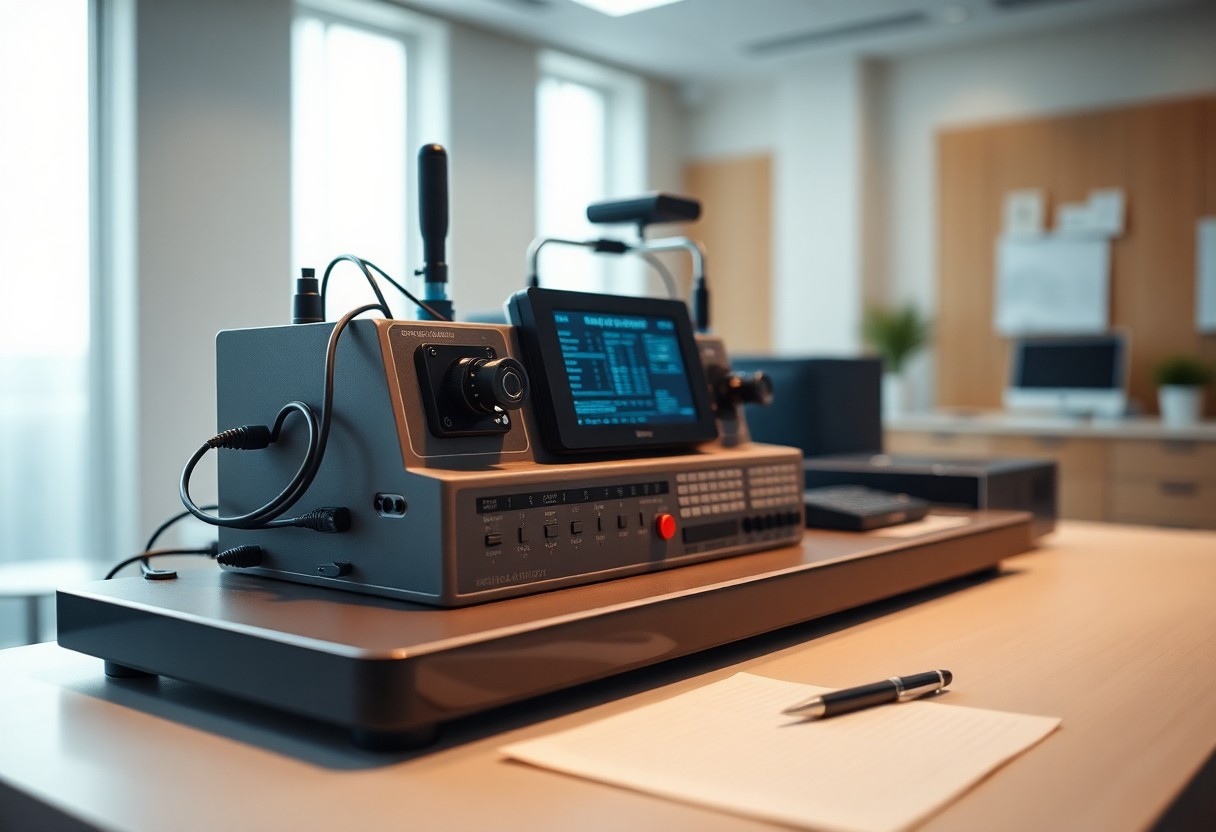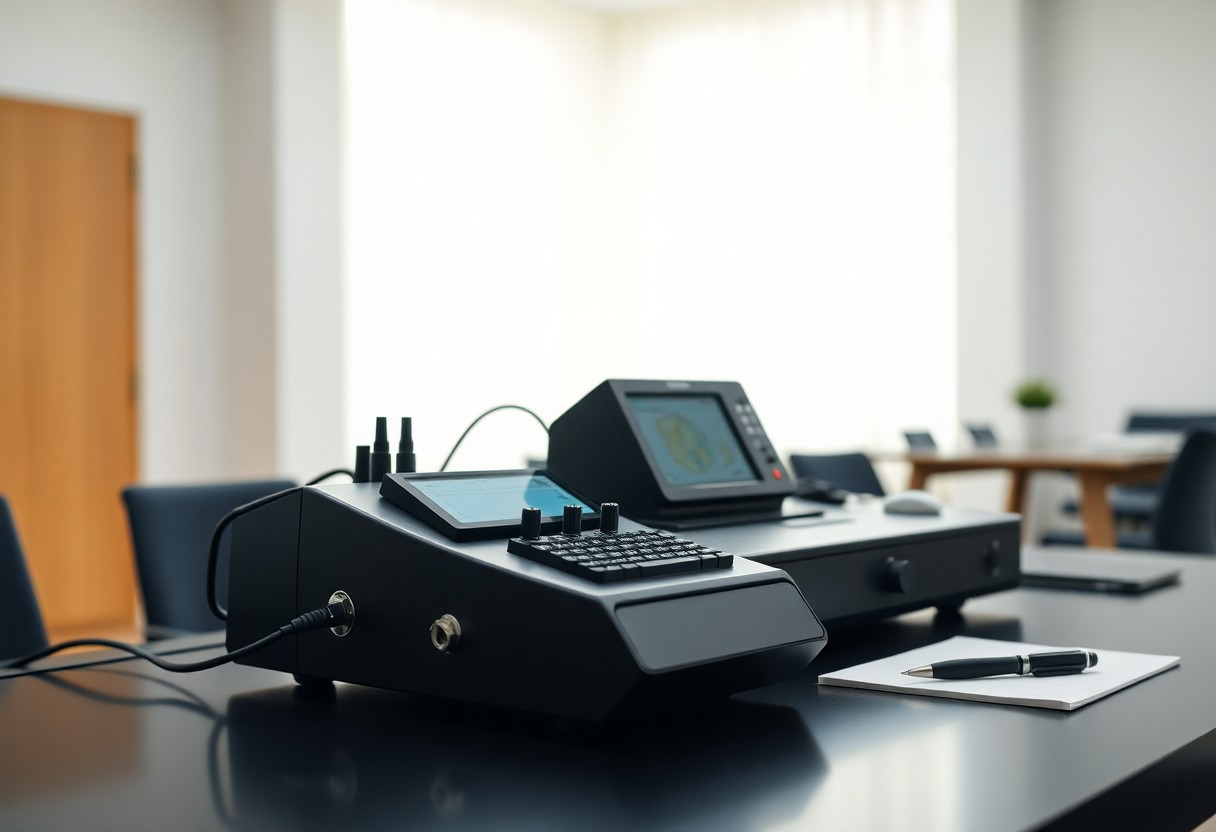
You can enhance the accuracy of your polygraph results by following a systematic approach to setup. Ensuring proper calibration and selecting the right sensors will significantly impact the data collected during the examination. Throughout this guide, you will learn how to position your equipment, manage environmental factors, and conduct thorough pre-test interviews, all of which are vital for achieving reliable outcomes. With the right techniques in place, you will be well-equipped to conduct effective polygraph testing.
Key Takeaways:
- Calibration is vital: Ensure your polygraph is properly calibrated to maintain accuracy and reliability in the results.
- Environment matters: Setting up a comfortable atmosphere can reduce anxiety and improve the subject’s responses during the test.
- Preparation of subjects: Thoroughly briefing subjects on the process helps them engage more effectively and yields better results.

Understanding Polygraph Basics
A solid foundation in polygraph basics will equip you with the knowledge necessary for conducting effective tests. By familiarizing yourself with the underlying principles and components, you can enhance the reliability of your results and better interpret the data obtained during examinations.
What is a Polygraph?
For a thorough understanding, a polygraph is a device used to measure physiological responses—such as heart rate, blood pressure, and respiration—as indicators of truthfulness or deception. These responses are recorded while you ask your subject a series of relevant questions, providing valuable insights into their honesty.
Key Components of a Polygraph
Around the core functionality of a polygraph are several key components that work together to provide accurate readings. These include sensors that monitor your subject’s physiological responses, a recording mechanism to capture the data, and an analysis system to interpret the results.
Polygraph equipment typically consists of three primary sensors: a blood pressure cuff for monitoring blood pressure, a respiration belt to measure breathing patterns, and galvanic skin response sensors to assess sweat gland activity. These innovations allow you to gather a comprehensive view of your subject’s physiological state, enhancing the effectiveness of your test. Accurate placement of these sensors is important for obtaining reliable data that can reveal stress levels associated with deceit. By mastering the use of these components, you can significantly improve the quality and validity of your assessments.

Preparing Your Environment
While setting up your polygraph, it’s vital to prepare your environment for optimal results. Ensure that the testing area is quiet, comfortable, and free from interruptions. For a deep investigate the nuances of this process, refer to The ENTIRE polygraph testing procedure (4 phases) … to understand how the environment plays a significant role in accurate readings.
Importance of a Controlled Setting
Across various studies, a controlled setting has shown to significantly enhance the reliability of your polygraph results. By maintaining a peaceful atmosphere, you allow the individual being tested to focus entirely on the questions, improving their responsiveness without unnecessary stress.
Minimizing External Distractions
Minimizing external distractions is imperative during a polygraph test. This means not only managing noise levels but also controlling visual stimuli that could divert the subject’s attention. The absence of interruptions allows for clearer communication and a sharper focus, which ultimately leads to more accurate results.
Importance of minimizing distractions cannot be overstated; even minor annoyances can lead to fluctuations in physiological responses. Factors such as background chatter, vibrations from phones, or sudden movements can disrupt the subject’s concentration, potentially skewing your readings. Creating a distraction-free zone will foster an environment where the individual can fully engage with the test process, ensuring their answers are genuine and reflective.
Assembling the Equipment
For optimal results, assembling your polygraph equipment involves gathering all necessary components, including the polygraph machine, sensors, and recording mediums. Thoroughly check each piece for functionality and ensure you have the right preparations in place. For additional insights, refer to What Routine should I Use to Prepare for a Polygraph Exam? to familiarize yourself with helpful guidelines.
Proper Setup of Sensors
On your polygraph, correctly positioning the sensors is vital to ensure accurate readings. Attach the breathing tubes around your chest and abdomen, and secure the blood pressure cuff around your arm. Proper placement prevents interference and enhances the precision of the data collected during the exam.
Calibration Techniques
Before beginning the exam, calibrating your polygraph is important for obtaining valid results. Adjust the machine settings based on the participant’s baseline measurements, ensuring the readings reflect their natural state without any external stressors. This step establishes the correctness of your readings.
Understanding effective calibration techniques is vital for reliable results. Adjusting the polygraph properly allows you to identify deception indicators accurately. Failing to calibrate can lead to false positives or negatives, which can have serious implications in high-stakes situations. As you calibrate, always prioritize accuracy and maintain a meticulous approach to measuring response levels, guaranteeing your data is as clear and consistent as possible.
Conducting Pre-Test Preparations
After you’ve set the stage for your polygraph examination, it’s vital to conduct thorough pre-test preparations. Start by reviewing the Polygraph Question Design Rules to ensure your questions are structured appropriately, as this will directly impact the accuracy of your results.
Explaining the Process to the Subject
Behind every effective polygraph test lies a well-informed subject. Take the time to clearly explain the testing process, including the equipment used, how data will be collected, and what they can expect throughout the procedure. Clear communication can ease anxiety and foster a more accurate testing environment.
Establishing Baseline Measurements
Any successful polygraph examination begins with establishing baseline measurements, which act as the control for comparison against interrogation responses. These measurements are usually gathered by asking neutral, non-threatening questions that your subject is comfortable answering.
To ensure reliable results, you should carefully monitor physiological responses during baseline measurement collection. These include heart rate, blood pressure, and respiratory patterns, which provide a critical benchmark against which to evaluate responses to relevant questions. Properly establishing these baselines can greatly improve the accuracy of your findings while offering insights into the subject’s psychological state during tense questioning.
Implementing the Test Procedure
To successfully implement the test procedure, you must ensure that all equipment is set up according to established protocols and that the environment is conducive to accurate readings. This means minimizing distractions, establishing a comfortable atmosphere for the subject, and preparing yourself mentally for the session to maintain focus throughout the testing process.
Question Design and Strategy
Implementing a robust question design and strategy is vital for obtaining reliable results. Construct your questions to be straightforward and clear, focusing on key areas of interest while avoiding leading queries that may inadvertently sway responses. Ensure that your questions are sequenced logically to facilitate the flow of the test.
Monitoring Response Data
Monitoring the response data during the test provides immediate insights into the subject’s physiological reactions. This real-time analysis enables you to identify peaks in stress levels that can indicate deception or discomfort.
Considering the significance of monitoring response data, you should pay close attention to physiological indicators such as heart rate, blood pressure, and galvanic skin response. These metrics can reveal valuable insights into the subject’s emotional state. You must also be aware that rapid fluctuations or strong reactions might signal anxiety rather than deception. Your ability to interpret these data accurately will significantly influence the outcome of the polygraph examination.
Post-Test Analysis
Your post-test analysis plays a vital role in understanding the results of the polygraph examination. This phase involves examining the data collected and assessing any physiological responses in relation to the questions asked. A thorough analysis not only informs you about the accuracy of the results but also helps you draw informed conclusions that can guide your next steps.
Interpreting Results
After conducting the polygraph test, you must analyze the results with an experienced examiner. They will identify any significant physiological reactions and guide you through understanding how these reactions relate to truthfulness or deception. It’s important to consider context and not rely solely on the numbers, as human factors can influence the outcomes.
Common Pitfalls and How to Avoid Them
Behind every successful polygraph test, there are common pitfalls that you need to be aware of to ensure accurate outcomes. Misinterpreting physiological responses or failing to consider the subject’s emotional state can lead to misleading conclusions. Avoiding these mistakes involves thorough preparation and maintaining clear communication before and during the test.
Even professionals can fall into common traps when analyzing polygraph results. Inadequate knowledge of physiological psychology might result in you misinterpreting the responses, such as confusing anxiety for deception. Additionally, neglecting external factors, such as the subject’s history or environmental influences, can skew results. By ensuring a comprehensive understanding of both emotional and physiological aspects, you can significantly enhance the reliability of your conclusions and make decisions based on solid analysis.
Conclusion
Presently, you’ve learned how to effectively set up your polygraph for optimal results. By following the step-by-step guide, you can ensure precise measurements and enhance the reliability of your assessments. Each phase of the setup process plays a vital role in achieving accurate outcomes, from calibrating the equipment to monitoring the test environment. Implement these strategies, and you will improve your proficiency in administering polygraph tests, leading to more trustworthy results in your evaluations.
FAQ
Q: What initial preparations should I complete before setting up my polygraph?
A: Before setting up your polygraph, ensure you have a quiet and distraction-free environment. Gather all necessary equipment, including the polygraph machine, sensors, and any related software. It’s also important to familiarize yourself with the operating manual of the polygraph to understand its components and functions. Lastly, review the relevant protocols for calibrating the machine to guarantee it gives accurate readings.
Q: How can I ensure that the polygraph provides accurate readings during the test?
A: To achieve accurate readings with the polygraph, start by properly attaching the sensors to the subject according to the guidelines provided in the manual. Ensure that the subject is relaxed and in a comfortable position before testing begins. It’s also vital to conduct a pre-test interview to gauge the subject’s state of mind, as anxiety and stress can influence readings. Finally, frequently calibrate the machine throughout the testing to maintain its accuracy and performance.
Q: What should I do if I encounter issues while setting up the polygraph?
A: If you run into issues during the setup, first troubleshoot by checking all connections and ensuring that the equipment is powered on and functional. Refer to the troubleshooting section of the operating manual for specific problems. If the problem persists, consider reaching out to the manufacturer’s customer support for assistance. Additionally, joining online forums dedicated to polygraph testing can provide valuable insights and solutions from experienced practitioners.
